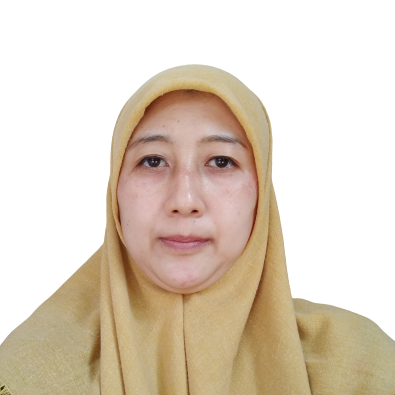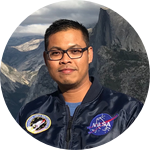About This Project
Fish that live in mesophotic ecosystems are not well documented. Even though certain fish species may be exclusive to mesophotic or shallow-water ecosystems, mesophotic ecosystems may serve as an essential refuge for some species. We will specifically investigate whether fish biodiversity from mesophotic reef zones follows the same patterns as fish in the photic zone by comparing the biodiversity of marine fish in mesophotic and shallow water ecosystems in Indonesia using eDNA metabarcoding.
Ask the Scientists
Join The DiscussionWhat is the context of this research?
The Coral Triangle is the world’s largest coral reef ecosystem and is home to 2,057 species of fish belonging to 113 families (1), with a strong biodiversity gradient that peaks in Eastern Indonesia (2, 3). This remarkable diversity has made the Coral Triangle the focus of numerous biogeographic studies (4, 5), as well as phylogenetic/phylogeographic studies (6, 7, 8, 9, 10). However, these studies have focused largely on shallow-water reef communities, and little is known about fish that live in the mesophotic zone. In terms of both depth and ecological traits, mesophotic ecosystems differ from shallow water ecosystems (11, 12, 13). For this reason, understanding the diversity of mesophotic communities and considering it in the planning of conservation initiatives is essential.
What is the significance of this project?
Marine ecosystems are essential to Indonesia's economy and culture. The ability to evaluate and track marine biodiversity in an affordable and dependable manner is essential to maintaining the sustainability of these ecosystems. We believe that the potential of eDNA metabarcoding to uncover the biodiversity in the mesophotic zone could determine whether there are biodiversity differences between shallow water and mesophotic environments, given that eDNA has proven useful in capturing biodiversity differences across habitats. The findings would have a significant impact on science, economics, and food security. They could also be expected to serve as a baseline for Indonesia's ministries, research institutes, and other stakeholders involved in fisheries, conservation, and ecotourism.
What are the goals of the project?
Using eDNA metabarcoding, we will compare the biodiversity of marine fish in mesophotic and shallow-water ecosystems throughout Indonesia. To test the hypothesis that mesophotic reefs can serve as a refuge, we will specifically examine whether fish biodiversity from mesophotic reef zones follows the same patterns as fish in the photic zone and whether shallow-water fish DNA is observed in mesophotic ecosystems (12). Since there can be significant taxonomic overlap in communities, it is possible to speculate that mesophotic ecosystems may play a significant role in providing important refuge for shallow water species that are negatively impacted by anthropogenic and natural stressors, even though fish species may be unique to mesophotic or shallow water ecosystems.
Budget
Funding will primarily be used to support field sampling activities in Indonesia, particularly in Bunaken, North Sulawesi, and pay for the international flights from Los Angeles to Jakarta. Additionally, because we have already collected eDNA samples from the mesophotic ecosystems in both Raja Ampat and Bunaken, we would concentrate on gathering eDNA samples from the shallow-water ecosystem in Bunaken during the field work. We have budgeted for the expenses associated with eDNA laboratory work and analysis in our lab at the University of California, Los Angeles (UCLA). Although the main costs for lab work and eDNA analysis would have been covered, we need extra funds to make a purchase of eDNA sampling kits and other field materials as well as to cover domestic flights from Jakarta to Manado, rent a boat to access the sampling sites and provide the accommodation during the field sampling in Bunaken. The budget for local transport would be mainly used to cover excess baggage.
Endorsed by
 Project Timeline
Project Timeline
Since this research is part of my doctoral thesis research, we will follow the quarter system as the academic calendar that is used at UCLA. We will start the preparation in spring 2024 and plan to collect eDNA samples from Bunaken in summer 2024. We will then start doing some lab work in fall 2024, and we expect to see the final results in winter 2025.
Apr 23, 2024
Project Launched
May 01, 2024
Sampling preparation
Jul 01, 2024
Trip to Indonesia (Jakarta)
Aug 09, 2024
Trip to Bunaken, North Sulawesi
Aug 14, 2024
Trip back to Jakarta
Meet the Team
Onny Nurrahman Marwayana
I am a graduate (Ph.D.) student in Department of Ecology and Evolutionary Biology at University of California Los Angeles. I am also a junior researcher in marine biology and molecular ecology at the Research Center for Ecology and Ethnobiology, National Research and Innovation Agency of Indonesia. My current research talks about environmental DNA (e-DNA) to reveal the effectiveness of e-DNA in detecting the Indonesian Coelacanth and the patterns of mesophotic fish biodiversity and phylogeography.
Additional Information
eDNA metabarcoding is a revolutionary approach to biodiversity studies and relies on the collection, isolation, and PCR amplification of cells and DNA molecules shed by organisms into their environment. By sequencing eDNA molecules and then comparing these sequences to a database of reference sequences through a process known as DNA metabarcoding, the unknown DNA sequences can be assigned to species (13). This research is part of my doctoral thesis project. Following the methods of Marwayana et al. (2021), we will sample eDNA from areas in Bunaken, North Sulawesi, Indonesia, that span a strong fish biodiversity gradient, like Raja Ampat. We will focus on sampling shallow-water reefs from which we previously collected eDNA samples from mesophotic reefs so that we can directly compare shallow-water and mesophotic ecosystem diversity. Sampling and processing of eDNA samples will be similar to the eDNA lab work previously developed by Marwayana et al. (14), with the exception that we will only use a 12S universal fish metabarcoding primer (15). Please look at Table 1 for more detailed information.
Table 1. eDNA primer sets which will be used to target the mesophotic fish
DNA Marker | Primer Name (Forward) | 5’ – …… – 3’ | Primer Name (Reverse) | 5’ – …… – 3’ | Reference | Organism Target |
12S | MiFish-U F | GTCGGTAAAACTCGTGCCAGC | MiFish-U R | CATAGTGGGGTATCTAATCCCAGTTTG | Fish | |
12S | 12SF1/R1-For | ACTGGGATTAGATACCCC | 12SF1/R1-Rev | TAGAACAGGCTCCTCTAG | Riaz et al., 2011 | Fish |
Upon acquiring and analyzing the taxonomy tables and sequence data, we will contrast the information from the photic and mesophotic zones. In particular, we will examine and plot the photic zone's alpha, beta, and zeta diversity data and then contrast them with the previous data (14) on the diversity of shallow-water reef fish.
Project Backers
- 7Backers
- 107%Funded
- $6,237Total Donations
- $891.00Average Donation




